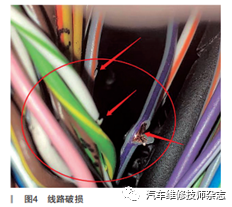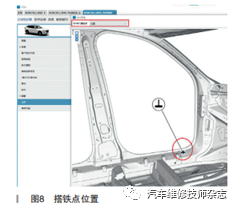[Repair Case] 2019 Volvo XC60 airbag light alarm
Posted by Tony Brown on
Model: XC60
System: Electrical
Year: 2019
Issue: The air bag light on the instrument lights intermittently.
Troubleshooting: The owner of the car reported that airbag light of the car was on, and sometimes the braking was not easy to use. We heard that he had been to the repair shop for inspection before, yet no problem was found. The car did not light up after being promoted to a higher level, and it has not been used very much recently. We connected the diagnostic instrument and discovered that different modules such as airbag SRS, instrument DIM, wiper switch, air conditioning module CCM, steering column lock SCL all reported faults, mostly related to network communication. The fault tracing of the fault code cannot be carried out, probably because:
Poor connection of network plug
a module problem
Interference
The car owner is a fan of vehicle modification, adding a 360°surrounding system, pedals and an electric tailgate to the car, which may cause interference during inspection. First, disconnect these additional parts and clear the fault code, read again, and no fault code appeared. The failure did not reproduce after starting the vehicle in-situ test for half an hour. Drive 2km at different speeds and road conditions, the anti-slip light was on, and we used the diagnostic instrument to check again.
Check the installation again and find that the two network cables of the 360°surround shadow are not disconnected, so disconnect the two cables and clear the fault code, which can be completed.
After another road test, the fault did not reproduce. Go back to the workshop and park the vehicle for a short period to see if the fault occurs again. About 1 hour later, due to the need to move the vehicle, it was found that the vehicle could not be started, and the diagnostic instrument was connected to display the fault code.
Next, turn off the key and turn the steering wheel, and find that the steering column lock is not locked. Could it be that the steering column lock SCL is faulty? At this time, I remembered that once a customer had a problem with the line due to improper installation. Is this car also having similar problem? I began the inspection with doubts, and started the car again unconsciously before the inspection, and the car started again. When the flashing plate was removed and the wiring harness was stripped, something shocked me, as shown in Figure 1.

Figure 1
After processing the wiring harness, I went out to test the car. After the road test, the failure did not reproduce. I returned to the shop, parked the vehicle, and did not turn off the engine to let it idle for a test without moving. After about 2 hours, I checked again and found that the airbag light on the instrument was on again. I connected the diagnostic instrument, finding that the fault codes read were like those before, and it was impossible to trace the fault codes of the airbag control module.
The detected condition is the passenger airbag light status signal sent from the top console (OHC) via the central electronic module CEM, which has not been updated within the expected time frame. It feels like it is caused by the top console OHC, which communicates with the body module through the LIN bus.
Measure the LIN bus voltage was between 7~9V and disconnect the OHC plug. The fault code reported contained the fault codes during the initial inspection.
SRS-U014000 lost communication with the central electrical module. Exchange the normal vehicle OHC, clear the fault code and test drive, the problem did not reproduce. Considering that this problem was an intermittent failure, I tested the car several times, and the airbag light came on again at noon the next day. Connect the diagnostic equipment VIDA to read the fault code.
Basically, the fault codes were like the previous ones, and they belonged to different system modules. What is the connection between them? The probability of module failure at the same time is almost zero, and the common parts are nothing more than: power supply, network, and grounding.
The power supply does not belong to the same fuse control, thus is not in consideration. The external interference is basically excluded on the network bus. The network voltage is about 2.8V for CAN H and about 2.2V for CAN L, which is normal. Check the roof console OHC, air conditioning module CCM, steering column lock SCL, SWM combination switch, and SAS steering angle sensor one by one.
Remove the left front welcome board, open the carpet to find the grounding point, and found that the nut is loose (as shown in Figure 2). After several test runs after tightening, the problem did not reappear, and the problem did not reappear after reinstalling the pre-installed parts.

Figure 2
Troubleshooting: Repair the wiring harness and tighten the ground wire.
Fault summary: This fault seems to be a difficult one, because there are multiple modules reporting faults at the same time. Moreover, the faults are intermittent, sometimes non-existent, and require testing and verification, which is time-consuming and labor-intensive. However, after finding the problem, it is not so complicated to scrutinize it, because these fault codes have a common problem. Therefore, the summary of this case is as follows: 1. See the common problems of unrelated system components, such as network, power supply, grounding, and interference. 2. Improper installation does cause unpredictable failures. For example, when the car is installed, the wiring harness is pierced or even broken, which brings great difficulties to maintenance. The fault grounding point of this car is also not fastened in place during installation. 3. For the failure of multiple failures at the same time, the root cause of the problem can be quickly found with the help of maintenance materials. For example, in this case, it is difficult to find the failure point without the relevant circuit diagram. 4. Intermittent electrical faults are mostly caused by rusted plugs or poor contact, poor grounding, and network interference of installed parts.







![[Repair Case] Audi Q5 cruise control system is unavailable](http://autospecialtools.com/cdn/shop/articles/q5_02_480x480_d8b1cb76-049c-4069-9331-81bf449c6755_400x.webp?v=1656052131)
![[Repair Case] 2016 BMW 316Li engine 3-cylinder misfire](http://autospecialtools.com/cdn/shop/articles/316Li_03_480x480_1dd3a9df-0306-43f8-8fd0-e18b4373a83d_400x.webp?v=1656051239)
![[Repair Case] 2021 Mercedes-Benz GLA200 instrument prompts "auxiliary battery failure"](http://autospecialtools.com/cdn/shop/articles/image2_400x.png?v=1656051178)
![[Repair Case] 2019 Audi uses a 3D printer to make an Audi e-tron gearbox installation](http://autospecialtools.com/cdn/shop/articles/image1_400x.png?v=1656051124)
![[Repair Case] 2018 Mercedes-Benz E300 instrument prompts "Blind Spot Assist System Stops Working"](http://autospecialtools.com/cdn/shop/articles/2022-5-24-E300_400x.png?v=1656050897)
![[Repair Case] 2019 Audi A3 cruise control function fails](http://autospecialtools.com/cdn/shopifycloud/shopify/assets/no-image-2048-5e88c1b20e087fb7bbe9a3771824e743c244f437e4f8ba93bbf7b11b53f7824c_400x.gif)